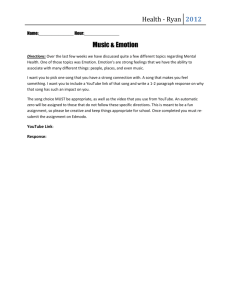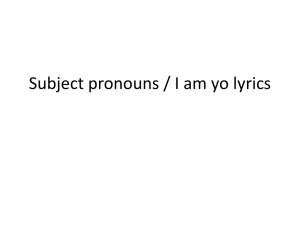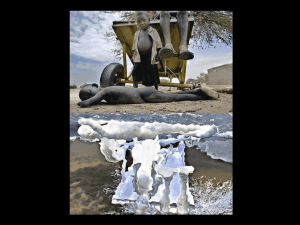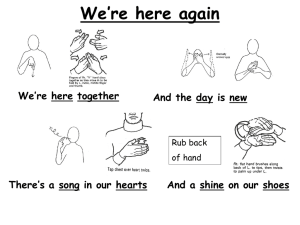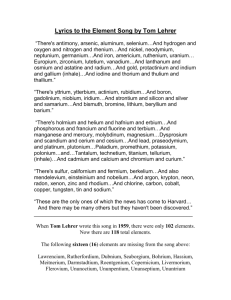Fieldwork
advertisement
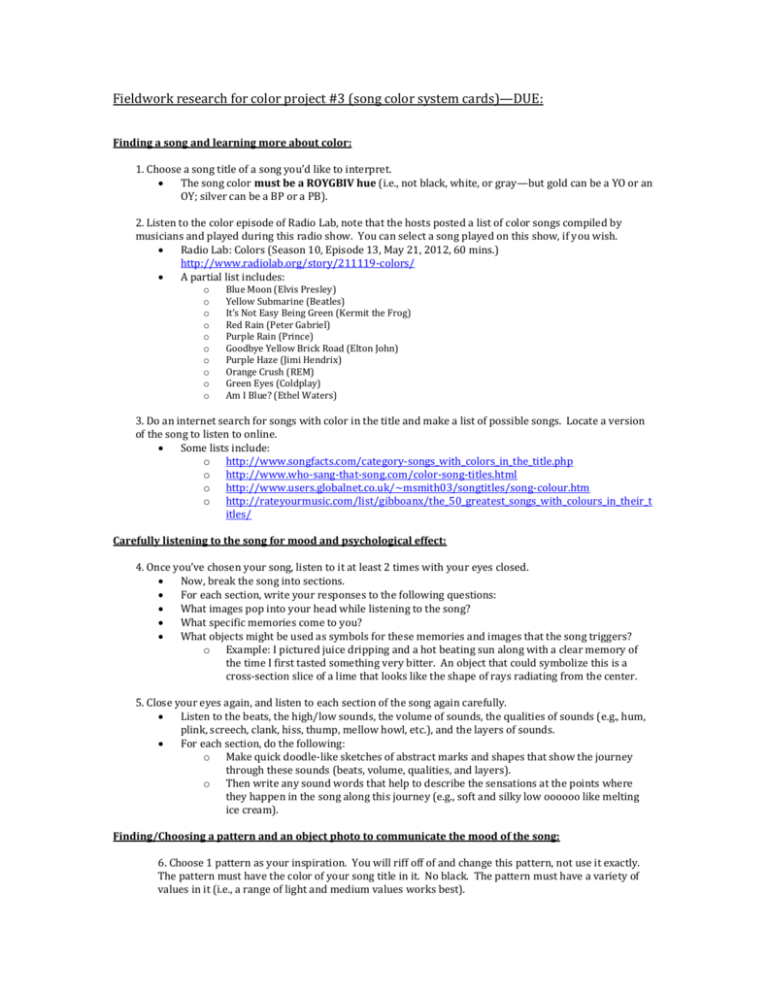
Fieldwork research for color project #3 (song color system cards)—DUE: Finding a song and learning more about color: 1. Choose a song title of a song you’d like to interpret. The song color must be a ROYGBIV hue (i.e., not black, white, or gray—but gold can be a YO or an OY; silver can be a BP or a PB). 2. Listen to the color episode of Radio Lab, note that the hosts posted a list of color songs compiled by musicians and played during this radio show. You can select a song played on this show, if you wish. Radio Lab: Colors (Season 10, Episode 13, May 21, 2012, 60 mins.) http://www.radiolab.org/story/211119-colors/ A partial list includes: o o o o o o o o o o Blue Moon (Elvis Presley) Yellow Submarine (Beatles) It’s Not Easy Being Green (Kermit the Frog) Red Rain (Peter Gabriel) Purple Rain (Prince) Goodbye Yellow Brick Road (Elton John) Purple Haze (Jimi Hendrix) Orange Crush (REM) Green Eyes (Coldplay) Am I Blue? (Ethel Waters) 3. Do an internet search for songs with color in the title and make a list of possible songs. Locate a version of the song to listen to online. Some lists include: o http://www.songfacts.com/category-songs_with_colors_in_the_title.php o http://www.who-sang-that-song.com/color-song-titles.html o http://www.users.globalnet.co.uk/~msmith03/songtitles/song-colour.htm o http://rateyourmusic.com/list/gibboanx/the_50_greatest_songs_with_colours_in_their_t itles/ Carefully listening to the song for mood and psychological effect: 4. Once you’ve chosen your song, listen to it at least 2 times with your eyes closed. Now, break the song into sections. For each section, write your responses to the following questions: What images pop into your head while listening to the song? What specific memories come to you? What objects might be used as symbols for these memories and images that the song triggers? o Example: I pictured juice dripping and a hot beating sun along with a clear memory of the time I first tasted something very bitter. An object that could symbolize this is a cross-section slice of a lime that looks like the shape of rays radiating from the center. 5. Close your eyes again, and listen to each section of the song again carefully. Listen to the beats, the high/low sounds, the volume of sounds, the qualities of sounds (e.g., hum, plink, screech, clank, hiss, thump, mellow howl, etc.), and the layers of sounds. For each section, do the following: o Make quick doodle-like sketches of abstract marks and shapes that show the journey through these sounds (beats, volume, qualities, and layers). o Then write any sound words that help to describe the sensations at the points where they happen in the song along this journey (e.g., soft and silky low oooooo like melting ice cream). Finding/Choosing a pattern and an object photo to communicate the mood of the song: 6. Choose 1 pattern as your inspiration. You will riff off of and change this pattern, not use it exactly. The pattern must have the color of your song title in it. No black. The pattern must have a variety of values in it (i.e., a range of light and medium values works best). Do an internet search looking for patterns. Try antique textile patterns, ancient culture patterns, ornamental patterns, African patterns, Japanese patterns, Japanese wave patterns, etc. You can choose to combine 2 patterns together if you wish. Keep it relatively simple! You will be working with a small scale! 7. Choose 1 object image that you would like to use in your artwork—either as a repeating element in the design or as the single focal point for the artwork. The object photo should be visually interesting and in color (no black and white). Both the object and the pattern should communicate the mood of the song. 8. Bring your pattern and object images to class on a flash or email them to me BEFORE class (mmdupay@bgsu.edu).




